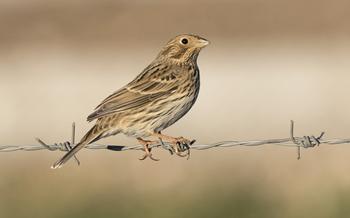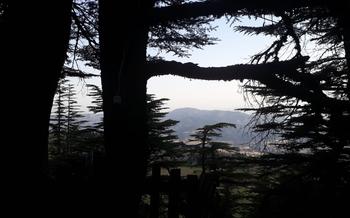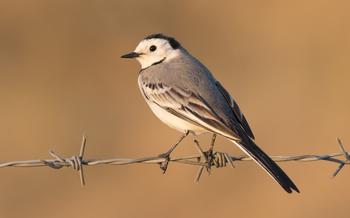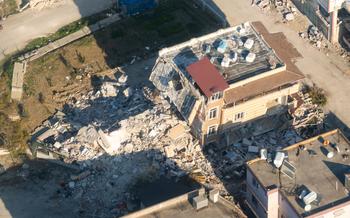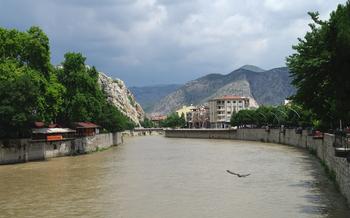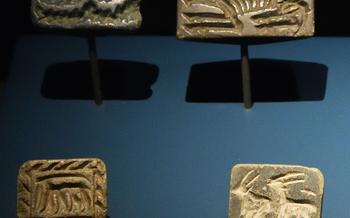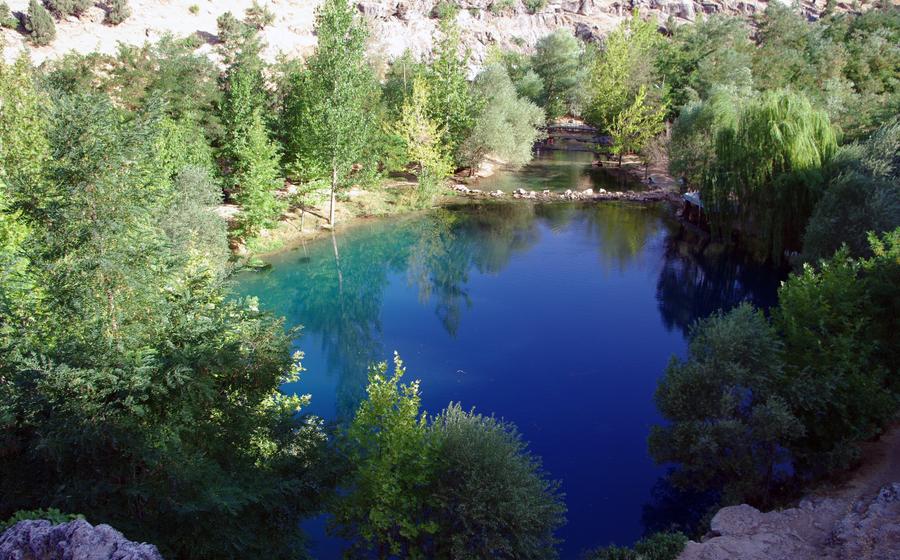
Kahramanmaras Tobacco Exchange Building
- History of the Kahramanmaras Tobacco Exchange Building
- Architectural Details of the Building
- Significance of the Building to the Tobacco Industry
- The Tobacco Auction Process
- Current Use of the Building
- Visiting the Kahramanmaras Tobacco Exchange Building
- Experiencing the Tobacco Market Atmosphere
- Exploring the City of Kahramanmaraş
- The Kahramanmaras Museum
- The Ulu Mosque: A Journey Through History and Faith
- The Kahramanmaras Castle
- The Sütçü Imam Restaurant
- The Dulkadiroğlu Bazaar
- The Germanicia Ancient City
- Insider Tip
History of the Kahramanmaras Tobacco Exchange Building
Kahramanmaras, a city in southeastern Turkey, has a rich history intertwined with tobacco production and trade. In the late 19th century, the city emerged as a prominent tobacco trading center, and the need for a dedicated space to facilitate tobacco transactions led to the establishment of the Kahramanmaras Tobacco Exchange Building. Constructed in 1893 during the Ottoman era, the building stands as a testament to the city's tobacco legacy and serves as a symbol of its cultural heritage.
The foundation of the Kahramanmaras Tobacco Exchange Building marked a significant milestone in the city's economic development. It provided a centralized platform for tobacco farmers, traders, and buyers to converge, fostering a vibrant marketplace that played a crucial role in regulating and promoting the tobacco industry. The building's architectural design reflects the grandeur and importance of the tobacco trade, showcasing intricate craftsmanship and incorporating elements that are both functional and aesthetically pleasing. Its status as a symbol of the city's cultural heritage is evident in its enduring presence and the sense of pride it evokes among the local community.
Architectural Details of the Building
The Kahramanmaras Tobacco Exchange Building stands as a testament to the rich architectural heritage of the region. Constructed in the late 19th century, the building seamlessly blends Ottoman and European architectural styles. Its intricate craftsmanship and attention to detail are evident throughout, from the ornate stone carvings to the elegant marble columns.
The building's facade features a grand entrance, flanked by symmetrical wings that extend on either side. The spacious courtyard, accessible through the main entrance, serves as a gathering place and features a central fountain surrounded by decorative elements. The courtyard leads to the main trading hall, a vast and airy space characterized by its towering dome and colonnades.
The use of stone and marble in the building's construction adds to its grandeur and durability. The exterior walls are adorned with intricate carvings and motifs, showcasing the skill and artistry of the craftsmen who built it. The interior of the building is equally impressive, with its high ceilings, arched doorways, and elaborate chandeliers.
Overall, the architectural details of the Kahramanmaras Tobacco Exchange Building reflect the cultural and economic significance of the tobacco industry in the region, while also showcasing the city's commitment to preserving its architectural heritage.
Significance of the Building to the Tobacco Industry
Kahramanmaras has a rich and storied history in tobacco production, dating back to the Ottoman era. The Kahramanmaras Tobacco Exchange Building played a crucial role in regulating and facilitating the tobacco trade, serving as a central hub for the buying and selling of tobacco leaves. The building's significance lies in its contribution to the city's economy, establishing Kahramanmaras as a vital center for tobacco production and trade in the region. The tobacco industry flourished in Kahramanmaras, becoming a significant source of income for farmers and traders alike. The building stands as a tangible reminder of the city's agricultural heritage and its enduring connection to the tobacco trade, which has shaped the economic and cultural landscape of Kahramanmaras.
The Tobacco Auction Process
In the heart of the Kahramanmaras Tobacco Exchange Building, the traditional tobacco auction process unfolded, a spectacle of commerce and camaraderie. Buyers and sellers from across the region gathered within the historic walls, their voices echoing through the spacious courtyard. The air was thick with anticipation as the auctioneer's rhythmic chant filled the room.
Tobacco leaves, carefully sorted and graded, were presented for bidding. Buyers scrutinized each batch, assessing its quality and aroma. The auctioneer's voice rose and fell, orchestrating the bidding frenzy. Hands shot up, fingers danced, and nods signaled offers. The atmosphere was electric, charged with the thrill of the chase.
The tobacco exchange was not merely a marketplace; it was a stage where human interactions played out. Buyers and sellers engaged in friendly banter, shared stories, and forged lasting relationships. The auction process was a social event, where business and camaraderie intertwined.
Over time, the auction system evolved. From the traditional open outcry method to the introduction of electronic bidding, the tobacco exchange adapted to changing times. Yet, the essence remained the same: the convergence of people, the exchange of goods, and the collective celebration of a shared heritage.
Current Use of the Building
The Kahramanmaras Tobacco Exchange Building has undergone a remarkable transformation, evolving into a vibrant cultural center and museum. The building's spacious halls and elegant interiors now host a variety of exhibitions, showcasing the rich history of tobacco production, trade, and the cultural heritage of Kahramanmaras. Visitors can delve into the fascinating world of tobacco through interactive displays, historical artifacts, and informative panels. The building also plays an active role in preserving and promoting local traditions by hosting events, conferences, and workshops that celebrate the region's unique identity. The transformation of the Tobacco Exchange Building into a cultural hub has breathed new life into this historic landmark, establishing it as a symbol of Kahramanmaras's commitment to preserving its heritage while embracing progress.
Visiting the Kahramanmaras Tobacco Exchange Building
To delve into the captivating history and significance of the Kahramanmaras Tobacco Exchange Building, travelers can embark on a guided tour. Knowledgeable guides provide insights into the building's architectural features, its role in the tobacco industry, and the fascinating auction process that once took place within its walls. Visitors can explore the spacious courtyard, admire the intricate carvings and decorative elements, and marvel at the towering dome that dominates the interior. Information desks and educational materials are available to enhance the visitor experience, while a gift shop offers souvenirs and local products as mementos of this unique cultural landmark.
Experiencing the Tobacco Market Atmosphere
On auction days, the Kahramanmaras Tobacco Exchange Building exudes a vibrant and energetic atmosphere. The air is filled with the buzz of conversation, the sound of laughter, and the occasional shout of a bid. Farmers and traders from all over the region gather here, eager to participate in the lively tobacco auctions.
Enter the building, and you'll be transported back in time to an era when tobacco was king. The walls are adorned with vintage photographs and artifacts, telling the story of the city's tobacco heritage. As you walk through the spacious courtyard, you'll notice the intricate carvings and decorative elements that add to the building's charm.
Find a spot to stand and observe the auction process. Watch as buyers and sellers engage in a lively bidding war, their hands raised high as they try to secure the best price for their tobacco. The atmosphere is electric, and the tension is palpable. Each bid is met with cheers, groans, and the occasional gasp of surprise.
As the auction progresses, you'll learn about the different types of tobacco grown in the region and the factors that influence their value. You'll also get a glimpse into the lives of the local farmers, who rely on tobacco farming for their livelihood.
Whether you're a seasoned tobacco enthusiast or simply curious about this unique aspect of Turkish culture, a visit to the Kahramanmaras Tobacco Exchange Building is an unforgettable experience. Immerse yourself in the vibrant atmosphere, interact with the locals, and witness the excitement of the tobacco auctions firsthand.
Exploring the City of Kahramanmaraş
Beyond the Tobacco Exchange Building, the city of Kahramanmaraş offers a wealth of other attractions and landmarks to explore. Take a stroll through the historic castle, a testament to the city's rich past. Ascend its ancient walls and be rewarded with breathtaking panoramic views that stretch for miles. Immerse yourself in the vibrant culinary scene, savoring local delicacies and street food that tantalize the taste buds. Delve into the bustling bazaars, where traditional crafts and souvenirs await those seeking unique treasures. Kahramanmaraş is a city that blends history, culture, and modern-day charm, offering an unforgettable experience for every traveler.
The Kahramanmaras Museum
The Kahramanmaras Museum, situated in close proximity to the Tobacco Exchange Building, serves as a repository of the city's rich history and cultural heritage. Within its walls, visitors are invited to embark on a journey through time, exploring the diverse tapestry of civilizations that have shaped this vibrant region.
The museum's collection encompasses a vast array of artifacts, each narrating a chapter in the story of Kahramanmaras. From ancient relics unearthed at the nearby site of Germanicia to intricate textiles and traditional crafts, the exhibits provide a tangible connection to the city's past.
Interactive displays and educational programs further enhance the museum experience, allowing visitors to delve deeper into the unique traditions and customs of Kahramanmaras. Whether you're a history buff, a culture enthusiast, or simply seeking a deeper understanding of this remarkable city, the Kahramanmaras Museum offers an immersive and enriching journey.
The Ulu Mosque: A Journey Through History and Faith
Standing proudly in the heart of Kahramanmaras, the Ulu Mosque is a testament to the city's rich religious heritage. Built in the 13th century during the Seljuk period, this architectural masterpiece showcases a harmonious blend of Seljuk and Ottoman influences. Its intricate tilework and calligraphy transport visitors to a bygone era, while the serene atmosphere invites contemplation and spiritual reflection. As one of the oldest mosques in the city, the Ulu Mosque holds a special place in the hearts of the local community, serving as a place of worship, gathering, and religious instruction. Whether you're a history buff, an architecture enthusiast, or simply seeking spiritual tranquility, the Ulu Mosque is a must-visit destination in Kahramanmaras.
The Kahramanmaras Castle
Perched majestically on a hill overlooking the city of Kahramanmaras, the imposing Kahramanmaras Castle stands as a testament to the rich history and architectural heritage of the region. Built during the Roman period, the castle was strategically positioned to defend the city against invaders. Over the centuries, it underwent several expansions and modifications, particularly during the Byzantine era, leaving behind a fascinating blend of architectural influences.
The castle's formidable walls and towers bear the scars of countless battles and sieges, silently narrating the tumultuous history of Kahramanmaras. Visitors can explore the castle's ramparts, dungeons, and hidden chambers, immersing themselves in the atmosphere of a bygone era. From the castle's lofty heights, visitors are rewarded with breathtaking panoramic views of the city, the surrounding countryside, and the distant Taurus Mountains.
A popular spot for photography enthusiasts and nature lovers, the Kahramanmaras Castle offers a unique perspective on the city's landscape. As the sun dips below the horizon, the castle's silhouette casts a dramatic shadow over the city, creating a magical ambiance that lingers long in the memory.
The Sütçü Imam Restaurant
Renowned for its signature dish, the eggplant kebab, the Sütçü Imam Restaurant is a culinary institution in Kahramanmaras. A family-run business with a history spanning over a century, it embodies traditional Turkish cuisine and hospitality at its best.
The restaurant's namesake dish, the Sütçü Imam, is a delectable creation of tender eggplant slices topped with a rich tomato sauce, garlic, and yogurt, then baked to perfection. The result is a flavorful and aromatic dish that has won the hearts of locals and visitors alike.
Beyond the eggplant kebab, the menu at Sütçü Imam offers a diverse range of traditional Turkish dishes, all prepared with fresh, local ingredients and cooked with care. From succulent kebabs to hearty stews and refreshing salads, there's something to satisfy every palate.
The ambiance of the restaurant is warm and inviting, with traditional Turkish décor and friendly staff who go out of their way to ensure a memorable dining experience. Whether you're a foodie seeking authentic culinary delights or simply looking for a taste of Turkish hospitality, Sütçü Imam is a must-visit destination.
The Dulkadiroğlu Bazaar
Dive into the vibrant atmosphere of the Dulkadiroğlu Bazaar, a traditional covered market that has been a bustling hub of trade and commerce for centuries. As you step through its arched entrance, you'll be greeted by a symphony of colors, sounds, and aromas. Stalls adorned with intricate carpets, shimmering fabrics, and aromatic spices line the narrow aisles, creating a captivating sensory experience.
Engage with friendly vendors who are eager to share their stories and showcase their unique products. From intricately woven textiles and gleaming copperware to fragrant spices and mouthwatering delicacies, the bazaar offers a treasure trove of souvenirs and local crafts. Hone your bargaining skills and immerse yourself in the lively negotiations, where the air crackles with energy and the spirit of haggling.
The Dulkadiroğlu Bazaar is more than just a shopping destination; it's a vibrant tapestry of local life. Observe artisans at work, creating exquisite handicrafts that reflect the rich cultural heritage of Kahramanmaras. Indulge in traditional Turkish coffee or çay (tea) from one of the many çay bahçesi (tea gardens) scattered throughout the market, and soak up the authentic ambiance.
Whether you're seeking unique souvenirs, local delicacies, or simply a glimpse into the heart and soul of Kahramanmaras, the Dulkadiroğlu Bazaar is an unmissable experience that will leave you with lasting memories.
The Germanicia Ancient City
Just a short distance from the bustling city of Kahramanmaras lies the ancient city of Germanicia, a testament to the region's rich history and heritage. Founded by the Romans in the 1st century AD, Germanicia once flourished as a prosperous city, serving as a major trade and cultural center. Archaeological excavations have revealed impressive ruins, including well-preserved city walls, temples, and theaters, adorned with intricate mosaics and carvings. Among the most notable structures is the Temple of Zeus, a colossal edifice that once dominated the city's skyline. Visitors can wander through the ancient streets, marveling at the remnants of a once-thriving civilization and gaining a glimpse into the region's storied past.
Insider Tip
If you truly want to immerse yourself in the tobacco culture of Kahramanmaras, plan your visit to coincide with the annual tobacco festival, typically held in September or October. This vibrant festival is a celebration of the city's rich heritage, showcasing the traditional tobacco auctions, exhibitions of tobacco products, and captivating cultural performances. Dive into the lively atmosphere, witness the excitement of the auctions, and savor the opportunity to engage with local farmers and traders. The festival offers a unique glimpse into the heart of Kahramanmaras' tobacco legacy and provides an unforgettable experience for visitors.


